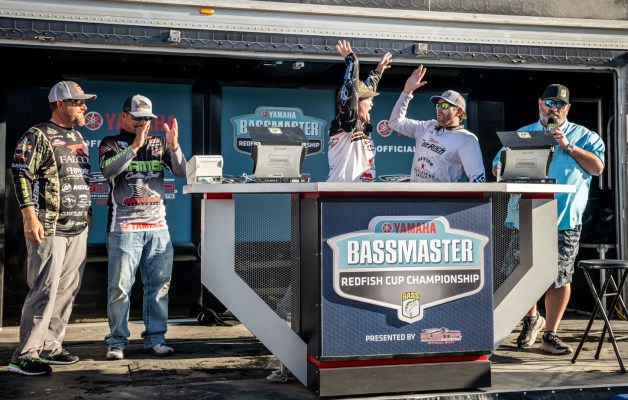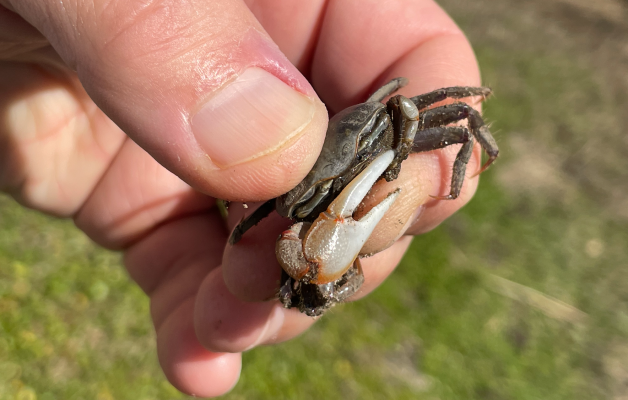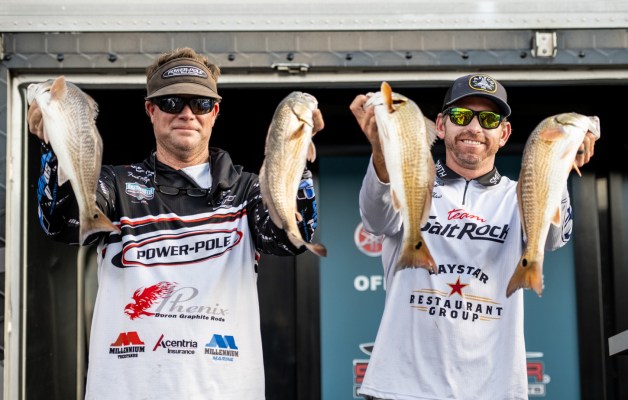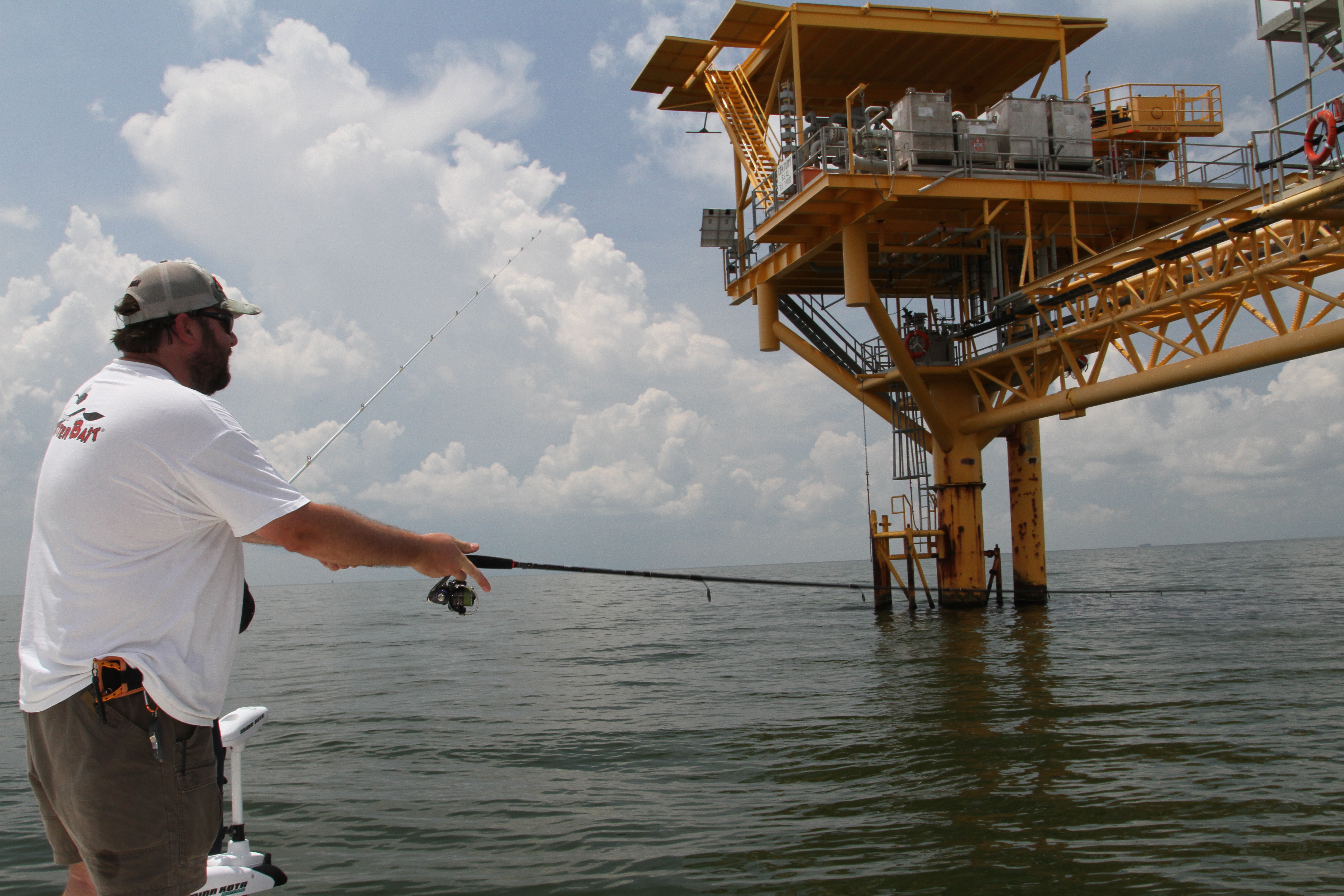
Captain Barnie White generally needs only a couple of rigs to catch redfish, but the Alabama angler knows hundreds of rigs from which to catch ‘em.
Puns aside, one of the top summertime options for Gulf of Mexico redfish anglers goes by the colloquial term “rig” — essentially any of the emergent oil or natural gas drilling structures scattered along the coasts of Alabama, Mississippi, Louisiana and Texas. Florida is the only Gulf Coast state that does not allow offshore drilling.
From modest single-leg structures to extensive platforms with crew quarters for full-time staffing, rigs check several boxes of predatory requirements. Far offshore rigs in several hundred feet often attract the mature redfish, but anglers in redfish skiffs and bay boats will find plenty of action on nearshore structures in 20 feet or less.
“It’s all about the structure,” said White, who will compete in the Yamaha Bassmaster Redfish Cup presented by Skeeter, Nov. 4-6 in Port Aransas, Texas. “That structure holds bait, and that bait stays around there 24/7.”
The briny buffet’s always an attractive feature, so coastal rigs may hold baitfish year-round. However, White notes the particular summertime appeal.
“Usually, the hotter it is, the hotter the fishing is out there,” he said. “The weather is generally calmer in the summer so you can get out there easier, but it’s more of a (cooler) water temperature thing.”
Favorable factors
While coastal marshes and creeks typically hold smaller redfish, the offshore drilling rigs produce a range of sizes. One structure could have slot size fish, while the next could be loaded with giant “bull” reds. According to White, finding quality and quantity on a good rig is no rarity.
“You might catch one that’s 20 inches and then turn around and catch one that’s 35,” he said. “Time of day doesn’t seem to matter as much as tide. As long as you have good tidal movement, the bite usually stays pretty good.
“With bait and predators, everything wants to get behind something to break the current. When the tide tide’s not too strong, the redfish tend to swim in circles around the rig.”
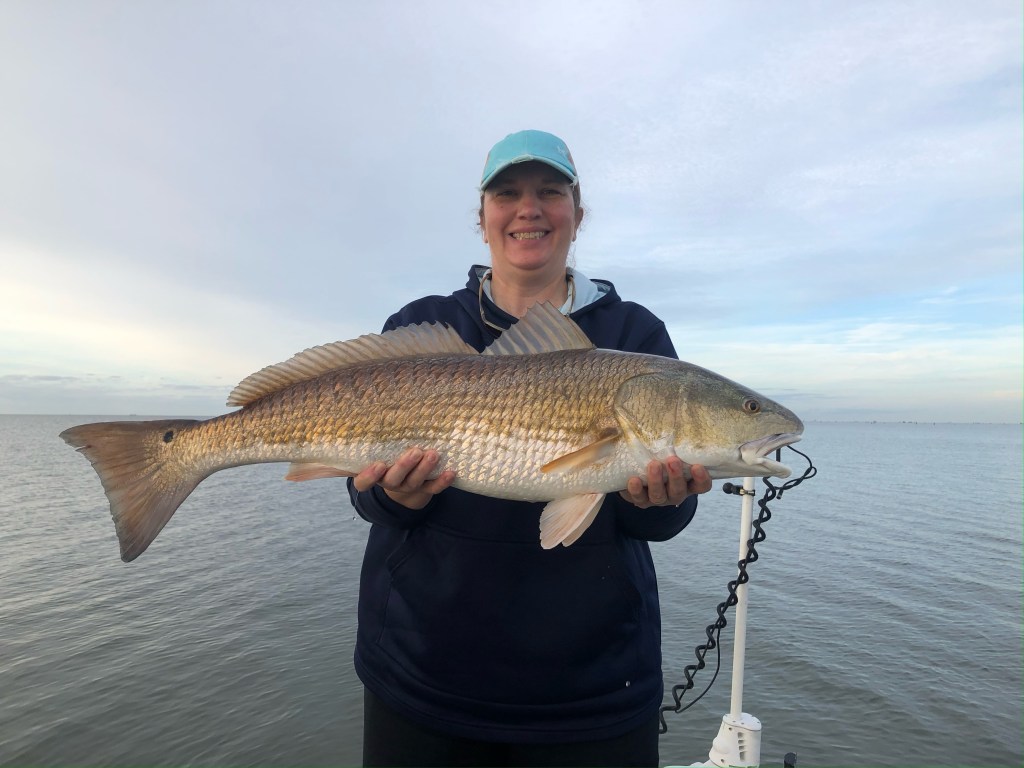
Louisiana’s Captain Ross Montet agrees, and while he doesn’t completely write off single leg rigs, in his view, more is better.
“I like fishing bigger rigs just because there’s more structure to fish,” Montet said. “If you hit those (smaller) satellite rigs, you’re basically running and gunning. That can pay off, but when you pull up to a larger rig, you have more area to fish.
“Also, I find the abandoned structures tend to hold fish more because they’re not getting pressured by crew boats. That doesn’t always matter, but the rigs that are less disturbed tend to hold a few more fish.”
Good signs include birds working bait, schools of menhaden (pogies) flipping at the surface and of course the unmistakable copper carnage of redfish chowing on the baitfish. White’s also keen to use his side-scanning sonar to peek under a rig to see if he can pinpoint where the bait school are holding.
“Once you find that bait, that’s what you key in on,” White said.
Productive presentations
One of the easiest and most consistent ways to probe the coastal drilling structures is a 3/8- to 1/2-ounce jig. White and Montet agree that a general baitfish form — paddle tail or curl tail — usually does the trick, but don’t overlook a synthetic shrimp or a slender soft plastic jerkbait or worm that mimics a sand eel.
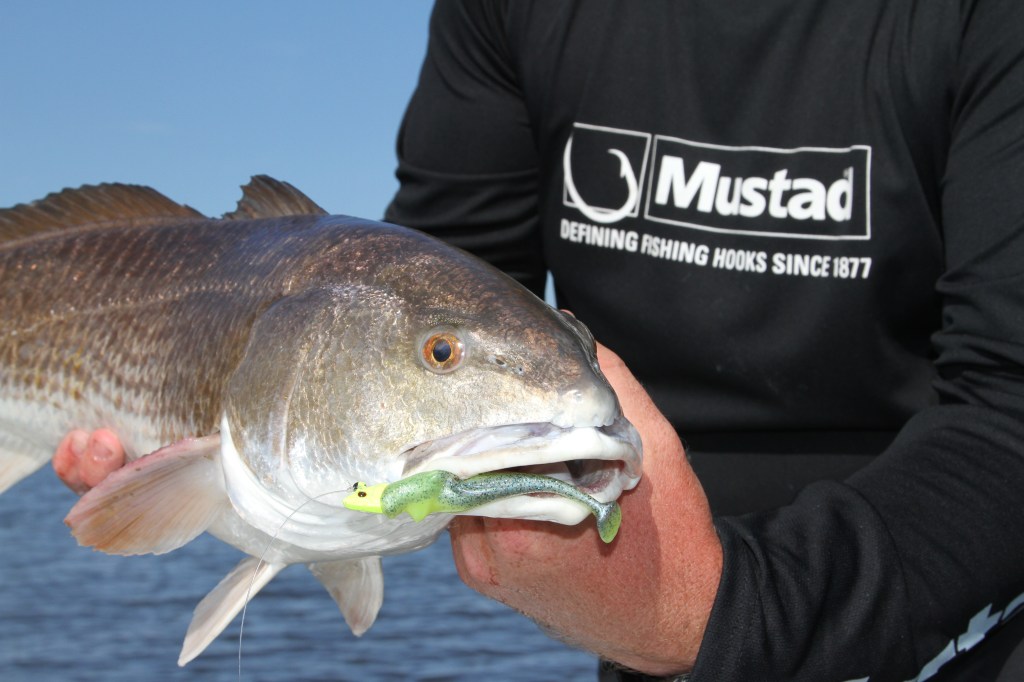
For live baiting with croakers, menhaden or shrimp, White likes a slip float rig. Ideal for long casts, this setup allows him to suspend a bait about a foot off the bottom, while maintaining a castable form.
The basic rig starts with a bobber stop placed on the main line, followed by a plastic bead, a free-sliding float, another bead, a 1/2-ounce slip sinker, one more bead, then a swivel. An 18-inch fluorocarbon leader tied to the swivel’s opposite end holds a No. 3 kahle hook.
When cast, the float slides tight to the swivel for a compact, efficient profile. When the rig hits the water, the weight pulls the leader section away, as line slides through the float until the bobber stop reaches those top beads.
“By adjusting the depth (moving the bobber stop up or down), you can keep your bait off the bottom and out of all that debris,” White said.
Montet points out another rig-friendly cork style presentation — the popping cork. A cone shaped float with a concave face makes a chugging commotion when tugged, while undulating a live or artificial bait below.
Redfish are a schooling species driven by feeding competition, so they’ll respond aggressively to anything that sounds like food. When they rush to investigate the surface noise, the vulnerable bait below closes the deal.
How to fish
After evaluating a rig’s potential, White idles into range and Spot Locks on a productive area. He’ll give a promising rig a few drifts, but if it doesn’t produce, he’s off to the next one.
As Montet notes, seasoned rig anglers typically start with a handful of known producers and set up a milk run until they find active fish. The good thing about rigs is their line-of-sight navigation. That means first timers can literally drive from structure to structure and likely run into a few bites.
Regardless of how it comes together, pay attention to the when, where and how details. Whether planned or random, establishing replicable patterns based on depth and/or rig size will keep the rods bent.
A couple of safety points: Recreational vessels must give way to crew boats bringing supplies and shuttling personnel to and from the rigs. Also, mind your spacing, as building waves — or wakes from passing vessels — can sneak up on you and push your boat into the rig.
Follow the rules
Montet notes a critical point for anglers interested in harvesting redfish: Know the regulations. Size and bag limits vary by state, but redfish harvest remains closed in federal waters — nine nautical miles from shore. The blackened redfish craze of the 1980s devastated the Gulf stock, so commercial and recreational harvest are prohibited.
You can catch and release all you want — just don’t put one in the cooler if you’re fishing federal waters. Sounds straightforward enough, but Montet advises anglers to clearly understand where the demarcation line — boundary between state and federal waters — lies.

Worth a mention: Where you harvest a redfish and where you possess a redfish can be two different things.
When calm conditions bring the northern Gulf’s deep water opportunities for pelagics like tuna, dolphin and king mackerel and cobia within reach of inshore boats, it’s common for anglers to blend a day with marsh/coastal fishing and some offshore fun.
An easy mistake, but one that won’t shield you from a citation, involves icing legal redfish in state waters and then running past the 9 NM line. Montet’s advice: Plan your day wisely to avoid even the appearance of a federal violation.
“You can go out into federal waters and then come back into state waters and keep reds, but you can’t catch reds in state waters and then carry them into federal waters.”


